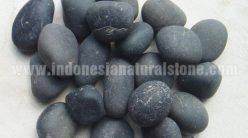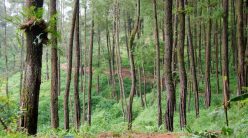From Wikipedia, the free encyclopedia
Description
The birds called Swiftlets or Cave Swiftlets are contained within the four genera of Aerodramus, Hydrochous, Schoutedenapus and Collocalia. They form the Collocaliini tribe within Apodidae. The group contains around thirty species mostly confined to southern Asia and south Pacific islands and north eastern Australia all within the tropical and subtropical regions. They are in many respects typical members of the Apodidae having narrow wings for fast flight, with a wide gape and small reduced beak surrounded by bristles for catching insects in flight. What distinguishes many (but not all species) from other Swifts and indeed almost all other birds (see Oilbird) is their ability to use a simple but effective form of echolocation to navigate in total darkness through the chasms and shafts of the caves they utilize for night time roosting and breeding
Nest as delicacy
One fact that these birds (only a few species within the genus) are possibly more renowned for, is the use of their nests for making bird’s nest soup (燕窩 pinyin Yan4 Wo1) in Chinese cuisine. During the breeding season, all the species’ salivary glands expand to produce the special sticky saliva for binding twigs and other detritus together for building the nest, which is a shallow cup stuck to the cave wall. Only a few species are suitable, and it is those species whose nests are made purely or almost purely of saliva that are harvested and most prized. The nests are harvested, at some risk to the collector, from high up on cave walls, with collectors standing on tall bamboo scaffolding (sometimes hundreds of feet tall and centuries old – with obvious repairs). There is some concern that over-harvesting is causing several species to become scarce. Bird nest merchants in southeast Asia (including Vietnam, Indonesia, Thailand etc.) have started to raise and breed the swiftlets in house-like structures. They build the shelters to attract wild swiftlets to build nests in them. The wrong kind of nests are then destroyed along with the eggs inside. Over time, the selection process only leaves behind a colony of swiftlets that produce the right kind of nest for the trade. “House nests” are priced much lower than the “cave nests” due to the level of risks involved in the harvesting process.
When cooked, the birds’ nests have a gelatinous texture. In Asian cuisine they are considered very good for the health. Some consumers of bird nest soup have noticed significant improvement in appetite. However, some others noticed excessive secretion of gastric acid that may cause acid reflux symptoms.
Food
Guano (dung) from both the Swiftlets and the many bats that inhabit the caves supports a huge array of specialized animals that feed on the dung. There are yet other creatures that have evolved to feed on these dung eaters as well as the bats and the swiftlets themselves including among others, snakes that can climb the sheer walls to snatch a passing meal and huge carnivorous crickets that prey on chicks and bat pups.
This ecosystem is totally self sustaining, the only link being the birds and the bats that bring the nutrients into the caves in the first place.
Species
• Genus Hydrochous
◦ Waterfall Swift, Hydrochous gigas
• Genus Collocalia
◦ Glossy Swiftlet, Collocalia esculenta
◦ Cave Swiftlet, Collocalia linchi
◦ Pygmy Swiftlet, Collocalia troglodytes
• Genus Aerodramus
◦ Seychelles Swiftlet, Aerodramus elaphrus
◦ Mascarene Swiftlet, Aerodramus francicus
◦ Indian Swiftlet, Aerodramus unicolor
◦ Philippine Swiftlet, Aerodramus mearnsi
◦ Moluccan Swiftlet, Aerodramus infuscatus
◦ Mountain Swiftlet, Aerodramus hirundinaceus
◦ White-rumped Swiftlet, Aerodramus spodiopygius
◦ Australian Swiftlet, Aerodramus terraereginae
◦ Himalayan Swiftlet, Aerodramus brevirostris
◦ Indochinese Swiftlet, Aerodramus rogersi
◦ Volcano Swiftlet, Aerodramus vulcanorum
◦ Whitehead’s Swiftlet, Aerodramus whiteheadi
◦ Bare-legged Swiftlet, Aerodramus nuditarsus
◦ Mayr’s Swiftlet, Aerodramus orientalis
◦ Palawan Swiftlet, Aerodramus palawanensis
◦ Mossy-nest Swiftlet, Aerodramus salangana
◦ Uniform Swiftlet, Aerodramus vanikorensis
◦ Palau Swiftlet, Aerodramus pelewensis
◦ Guam Swiftlet, Aerodramus bartschi
◦ Caroline Islands Swiftlet, Aerodramus inquietus
◦ Atiu Swiftlet, Aerodramus sawtelli
◦ Polynesian Swiftlet, Aerodramus leucophaeus
◦ Marquesan Swiftlet, Aerodramus ocistus
◦ Black-nest Swiftlet, Aerodramus maximus
◦ Edible-nest Swiftlet, Aerodramus fuciphagus
◦ German’s Swiftlet, Aerodramus germani
◦ Papuan Swiftlet, Aerodramus papuensis
• Genus Achoutedenapus
◦ Scarce Swift, Schoutedenapus myoptilus
◦ Schouteden’s Swift, Schoutedenapus schoutedeni





